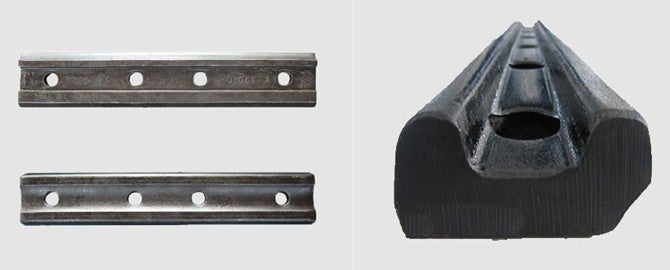
Among the typical standards of railway joint bars, such as AREMA standard rail joint, International Union of Railway (UIC) standard rail joint, GB standard rail joint, AS standard rail joint and so on, UIC standard rail joint is very popular in the railway market, especially the UIC 54 and UIC60 rail joint bar.
Compared with most rails which are connected by a railway splice bar, some railway tracks can also be joined together through welding. Usually, two or three holes will be drilled in the end of the rail tracks for splices.
The hole spacing pattern, also called ‘drilling’, is measured from the end of the rail to the centre of the first hole and from the centre of the first hole to the centre of the second hole and so on. And the typical drillings might be 21in-/2in x 5in or 3in-1/2in x 6in x 6in.
The competitive advantages of rail joints of AGICO Rail include:
- With over 60% market share in Chinese Railway Field as a railway accessories supplier
- Exported to over 50 countries with about 20 international standards
- A professional long-term supplier of CRCC for domestic and overseas railway projects
- Granted ISO9001-2000 certificate
- Own an R&D Center to manufacture international standards including Chinese Standard, South American Standard, UIC, BS, DIN and African Standard according to customers’ drawings or samples
The railway fishplate is an important component of railway track system. With the help of track bolt, the railway fishplate can be fastened stably to ensure the safety of railway transportation. Totally, there are four or six holes in the railway fishplate, but as to some railway fishplates, there are no holes on the surface.
This is because the railway fishplates are usually fastened with the help of track bolts. But sometimes, in order to ensure the immobility of the railway fishplates, the railway fishplates can also be welded to the tracks. So in that condition, there are no holes on the surface of railway fishplates just to improve the convenience for welding.
